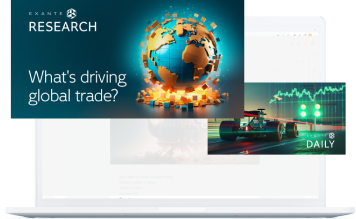- Concerns over how aggressively the Fed will continue to hike interest rates, the impact of China’s Covid lockdowns on supply chains and oil demand, and the ongoing conflict in Ukraine and its impact on energy prices hit global stock markets this week.
- US inflation is down, but not out.
- Euro/dollar parity possible despite ECB hints of rate rises to come.
Increasing volatility and downward performance by global stock markets. The S&P 500 is down over 17% YTD, the tech heavy Nasdaq is in bear market territory, down over 26% YTD, and the Dow Jones is down over 12% YTD. The situation is slightly better in Europe: the pan-European Stoxx 600 is down almost 14% YTD, the DAX down about 14.5% YTD, the CAC40 down 14% YTD, the IBEX 35 down about 6%, the FTSE MIB down about 14.6%, and the FTSE100 down only about 2.5% YTD. The MSCI World Index is now down almost 18% YTD.
Has US inflation peaked? Headline CPI fell to 8.3% in April from 8.5% in March while core inflation was up 0.6% on the month. PPI is up 11% y/o/y and 0.5% m/o/m signalling a continued feed through to consumer prices. Gas prices are still rising, wages are up (5.5% in April), and there is a super tight labour market (unemployment at 3.5%, payrolls up 428,000 last week) so inflation is not going away. The market is pricing in rate rises of 50 bps level or above into Q3 as the Fed attempts to cool the economy. The USD continues to strengthen. Investors are becoming more bearish with growth stocks like Amazon and tech stocks like Apple, Microsoft, and Alphabet particularly hard hit.
The ECB now likely to raise rates in July. ECB President Christine Lagarde finally said the ECB would look to start raising rates shortly after it ends its stimulus programme early in the third quarter. However, even if the ECB brings interest rates into positive territory, it may not be enough to stop the Euro reaching parity with the USD this year as growth prospects fall due to high energy prices, the continuing events in Ukraine, and the threat of rising borrowing costs for its more indebted members.
Stagflation is coming to the UK. GDP growth was unexpectedly down 0.1% in March and only grew by 0.8% in Q1 2022, below the BoE’s forecast of 0.9%. Inflation is forecast to surpass 10% this year due to higher food and energy prices and continuing supply constraints, a tight labour market with rising wages, existing trade restrictions and the threat of changing agreements pushing up goods prices, and a falling GBP (EUR/GBP, GBP/USD). There is a widening trade deficit, business investment is down 9.1% against pre-Covid levels (and was down 0.5% in Q1 2022) and consumer confidence remains negative; GfK consumer confidence fell to -38 in April, its lowest level since July 2008.
China’s zero-Covid policy hitting suppliers and markets. The CSI300 has fallen over 19.5% YTD and the Hang Seng down over 17%.
Data to look out for this coming week
- In Europe there is the European Commission’s new economic growth forecast, GDP data and inflation data
- In the US there is retail sales data and the Michigan Consumer Sentiment Index
- In the UK average earnings, unemployment and inflation data
DISCLAIMER: While every effort has been made to verify the accuracy of this information, EXT Ltd. (hereafter known as “EXANTE”) cannot accept any responsibility or liability for reliance by any person on this publication or any of the information, opinions, or conclusions contained in this publication. The findings and views expressed in this publication do not necessarily reflect the views of EXANTE. Any action taken upon the information contained in this publication is strictly at your own risk. EXANTE will not be liable for any loss or damage in connection with this publication.
Ten artykuł jest publikowany wyłącznie w celach informacyjnych i nie powinien być traktowany jako oferta lub zachęta do kupna lub sprzedaży jakichkolwiek inwestycji lub powiązanych usług, do których można się tu odwołać.







